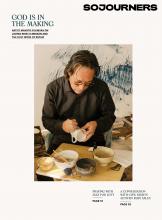AS THIS PANDEMIC rages on and people are isolated in their homes with their intimate partners, many are more vulnerable than ever to violence. According to the Centers for Disease Control and Prevention, approximately 1 in 4 women and nearly 1 in 10 men experience sexual violence, physical violence, or stalking by an intimate partner during their lifetime. In addition, an average of 24 people per minute are victims of rape, physical violence, or stalking by an intimate partner in the United States—more than 12 million women and men during a single year.
Odyssey Impact, an interfaith nonprofit that addresses social issues through storytelling and media, hopes to change this with a four-part Healing the Healers video series, directed by Kirsten Kelly, that features interfaith peer-to-peer conversations about domestic violence. It is scheduled for a January 2021 release on healingthehealers.org.
This is the second series under the Healing the Healers name. The first was a five-part video series that grew out of a pastor’s efforts in Newtown, Conn., to deal with the aftereffects of the Sandy Hook school massacre; it includes conversations with clergy, social workers, and first responders who have been on the front lines as different communities have dealt with traumatic events. The second Healing the Healers series on domestic violence likewise addresses a crisis by modeling honest conversation about a difficult topic across faith lines.
Read the Full Article

